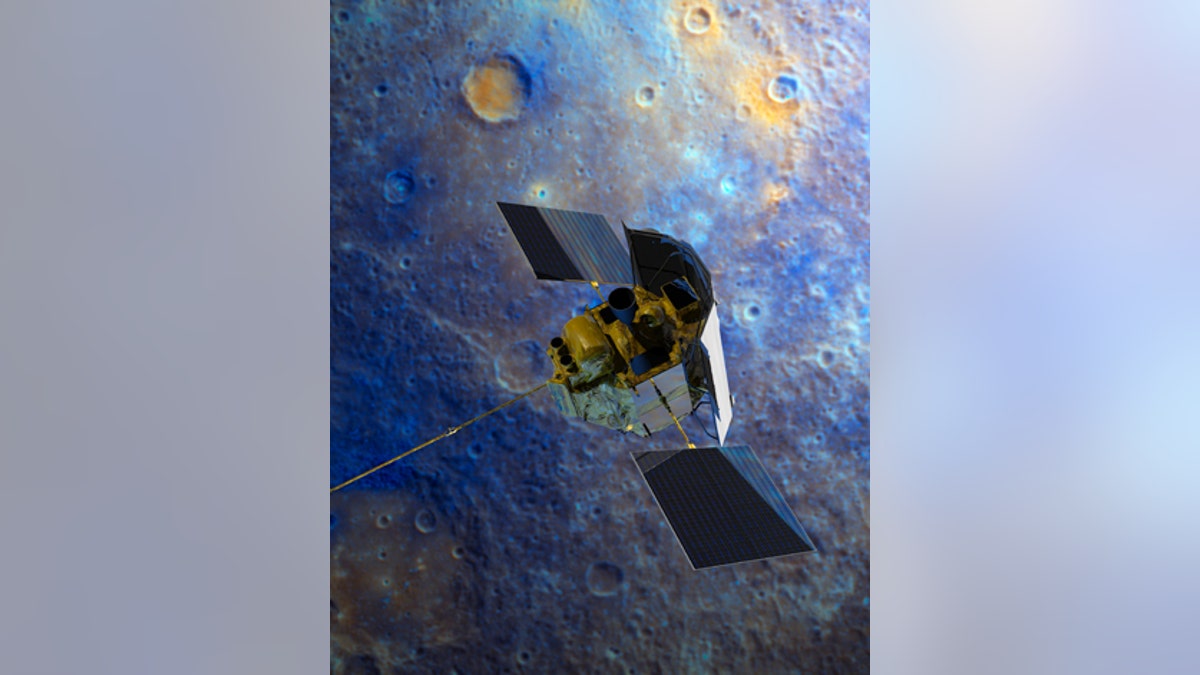
An artist's impression of the Messenger spacecraft is shown flying over Mercury's surface displayed in enhanced color. (Credit: NASA/Johns Hopkins University Applied Physics Laboratory/Carnegie Institution of Washington)
Messenger, NASA’s Mercury-orbiting spacecraft, reached the end of its historic 11-year mission Thursday when it crashed into the little planet closest to the sun.
The spacecraft, which was out of fuel, slipped out of orbit and slammed into Mercury at 3:26 p.m. ET, according to mission controllers at the Johns Hopkins University Applied Physics Laboratory (APL) in Laurel, Md.
Messenger slammed into Mercury’s surface at about 8,750 mph, according to NASA, creating a new crater on the planet’s surface. The crater is estimated to be as wide as 50 feet.
Mission control confirmed end of operations at 3:40 p.m. ET, when no signal was detected by NASA’s Deep Space Network (DSN) station in Goldstone, Calif., at the time the spacecraft would have emerged from behind the planet.
Because Messenger hit the side of Mercury facing away from the earth, ground-based telescopes were unable to capture the moment of impact. Mercury's proximity to the Sun, which could damage optics, also meant that space-based telescopes were unable to pick up the crash.
At 3:16 p.m. ET, the mission's @MESSENGER2011 Twitter account had tweeted: "Well I guess it is time to say goodbye to all my friends, family, support team. I will be making my final impact very soon."
At 3:23 p.m. ET @MESSENGER2011 tweeted "#thatsmessenger" and an image of Mercury's surface, with the message "Messenger's last act? That's smashing!"
Messenger made history in March 2011 when it became the first probe to orbit Mercury.
The crash ended a successful mission for Messenger, which was launched in August 2004. The spacecraft has undertaken extensive mapping of Mercury during its journey, and has sent a slew of data on the planet back to earth. Messenger, for example, found vast troves of sulfur on the planet’s surface. The probe also discovered that Mercury's internal magnetic field is offset from the planet’s center, and verified its polar deposits are dominantly water ice.
Messenger’s original goal was to take 2,500 images of the planet, but it has returned more than 270,000 to earth.
The Associated Press contributed to this report.
